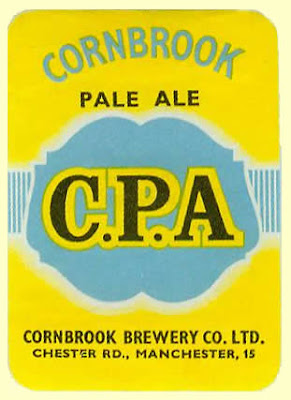Visit the Shut up about Barclay Perkins site
We’re back looking at United Breweries’ tank beer experiment. Would the management’s enthusiasm for the system be vindicated?
I used to have this image of Bass Charrington as some corporate behemoth, crushing smaller brewers with their ruthless business practices. In turns out that they (and the companies that led up to their formation) were pretty clueless and made some terrible decisions. The brewery in Runcorn being the biggest. The tank beer fiasco fitted in the same tradition: management getting obsession with a technical innovation and forcing it through without taking into consideration practical objections.
United Breweries rather rashly decided to convert all of their Bradford pubs at the same time. Unsurprisingly, they encountered a range of teething problems:
“The great field trial began and every Bradford pub was changed over to the new system, big trading houses and small barrelage locals; large orders for equipment were placed with the manufacturers. It was felt, with an almost religious fervour, that a new age was dawning. Flags and bunting festooned the outside walls of the pubs, like a jubilee festivity; banners covered the interior walls to apprise the customers of the arrival of a draught beer Utopia. There was a conviction that the opposition brewery companies would dissolve in the face of this competition and would beg to be taken into the asylum of UB, handing over their share certificates in gratitude. Well, it did not work out quite like that, just as the kingdom of heaven does not appear on earth just because a banner is displayed saying it has arrived.”
"The Brewing Industry 1950 - 1990", by Anthony Avis, 1997, page 77.
The bunting didn’t stay up for long. I was going to write: imagine celebrating the arrival of tank beer today. Then remembered that’s exactly what happens when Pilsner Urquell tank beer is installed. It’s hard to keep track of what is and isn’t cool nowadays.
“The problems started with Porter Lancastrian being unable to deliver the quantity of equipment on time, and in their endeavour to do so their quality control over what they did deliver, suffered. The beer dispensing apparatus was poorly designed and poorly made; the mild steel bulk containers for the beer were lined with a plastic skin which reacted with the acids in the beer. The regulators for controlling the pressure at which the carbon dioxide gas operated were uncertain in their efficacy, resulting in excess amounts of foaming beer. Lastly, the licensees and their staffs were quite unused to the new equipment and the principles on which it operated; they were accustomed to the simplicity of wooden barrels and hand pulled pumps. Also, Cornbrook brewed their beer specifically for their sort of trade and the new dispensing system. In Yorkshire, the Tadcaster brewery was required to adapt a beer brewed for a traditional system, and found it could not be done.”
"The Brewing Industry 1950 - 1990", by Anthony Avis, 1997, page 77.

I wonder if any of the Yorkshire breweries were using Yorkshire square fermenters? I seem to remember that beers brewed in that type of fermenter have a higher CO2 content. Was that why the beers weren't suitable for being served from a tank under pressure?
Things went terribly wrong from the start:
“Cornbrook staff were asked for help, and their response was a denial there was any problem with the equipment, which worked perfectly for them. All calls for such help had to be put through DCM or his general manager, and it became apparent there were no answers to be obtained from them, or even directly from the manufacturers. It further emerged that the system as operated in Lancashire was on a much more limited scale and was installed only in their large barrelage houses. One week after the Bradford houses had been converted to the system, on a Friday evening, it so happened that Hammonds had barely one public house which could serve any beer - when the dispensers were used only mountains of froth came out of the nozzles. Everybody was at a loss what to do, because no one knew the cause.”
"The Brewing Industry 1950 - 1990", by Anthony Avis, 1997, page 77.
Cornbrook seem to have rolled out the system in a much more sensible way: slowly and only to pubs selling enough beer for it to be worth the trouble. I can imagine the anger of landlords unable to pour any draught beer on a Friday night. It must have had a tremendous impact on their takings. Because I know what I’d do in that situation: bugger off to a pub that could serve beer.
Next time we’ll learn how the problem of over-carbonation was solved.
More...






 Reply With Quote
Reply With Quote